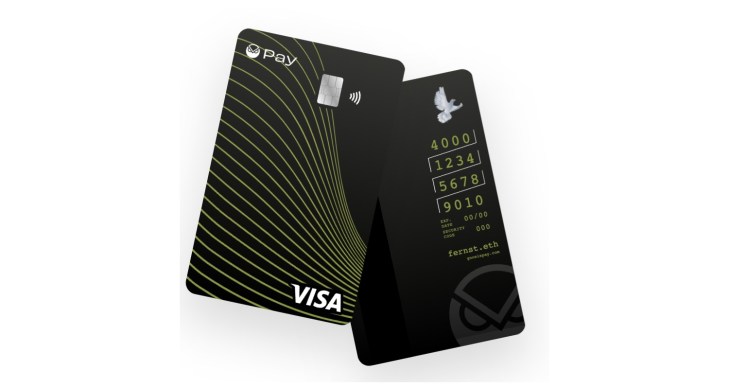The world of cryptocurrency has often been criticized for being exclusive, catering primarily to speculators and crypto-savvy individuals. Despite this, many advocates believe that the underlying decentralized technology has the potential to benefit society as a whole.
Gnosis, a well-regarded blockchain project in the developer community, is working to demonstrate the broader applicability of web3 by bridging the gap between self-custodial crypto wallets and traditional payment methods such as Visa. Its latest product, Gnosis Card, is a Visa card that allows users to spend their funds from self-custodial wallets anywhere the payment method is accepted.
While Gnosis Pay is launching at the major Ethereum community conference EthCC in Paris, the goal is to reach a wider audience beyond the crypto community, according to Dr. Friederike Ernst, Gnosis’s co-founder.
Since the FTX implosion revealed the misappropriation of customer funds, a seismic shift has been underway in the crypto industry where users are moving their assets away from centralized exchanges toward self-custodial wallets like MetaMask and Ledger.
But for a long time, there’s been no convenient way to spend self-custodial assets in the real world. The crypto industry, Ernst admitted, is currently dominated by “all these tokens that kind of don’t work anywhere else.”
“We’ve always had this really strong line between crypto and the real world. We’re trying to erase this bit by bit so people can use their real-world money in crypto and use their crypto to pay for things in the real world,” she said.
The Gnosis Card is initially launching in the U.K. and the EU, with plans to expand to Brazil, Mexico, Singapore and Hong Kong. Gnosis Pay is aiming to launch in the U.S. by the end of Q3 and will work with MakerDAO to offer its USD-denominated stablecoin Dai as an option for the credit card.
Gnosis already has the unit economics of the card figured out. Gnosis Card will be sold for €30, while the cost of producing and distributing the physical card is €10, with the surplus going toward engineering and compliance infrastructure. Transaction fees will generate revenue, and the card’s adoption will drive demand for Gnosis’s GNO token, eventually boosting its blockchain ecosystem.
Spending crypto like fiat
When asked why the financial system needs crypto’s play at all, Ernst argued for a more favorable future where crypto can enable truly peer-to-peer transfers, yet the technology needs time to mature.
“You need to give people like us some time because we actually try to build these things out. In principle, the user experience that will be afforded by truly peer-to-peer trust is superior in every way to what we currently have, and I think we need to get to a point where this is actually felt by the user.”
Unsurprisingly, a project like Gnosis Card requires significant heavy lifting in technology development, integration with the existing financial system and compliance.
“On the legacy side, if you pay somewhere, it looks so simple, but your payment actually goes through many hands. You need contracts with all of these [parties] to actually make the transaction happen. You need to become a member of Visa, which we are; we are becoming a member of MasterCard as well,” said Ernst.
One of the key partners powering Gnosis Card is Monerium, the company that offers the euro-denominated EURe, a stablecoin regulated in the European Union. Monerium allows users to connect their wallets to an International Bank Account Number or IBAN, a standardized system of identifying bank accounts across borders that are widely used in Europe.
When users send money from a bank account to a wallet-linked IBAN, payments are minted as EURes on blockchains, such as Ethereum and Gnosis, and show up in their wallets. Conversely, when users sign off payments from their wallets, EURes are burned and sent as a euro to their bank accounts.
Scaling fintech with crypto

Left to right: Martin Köppelmann (Gnosis co-founder), Stefan George (Gnosis co-founder), Marcos Nunes (Gnosis Pay CEO), Friederike Ernst (Gnosis co-founder). Image Credits: Gnosis
Gnosis is also launching Gnosis Pay, a set of developer tools that allow crypto wallets to create a version of their Gnosis Card for users without having to jump through all the hoops of building an online payments system. MetaMask, for instance, could issue a MetaMask card by simply utilizing Gnosis Pay’s APIs and toolings.
The offering offers another revenue stream to Gnosis. When it enables other wallets to issue their own in-house cards, it also takes a cut from the proceeds.
Starting a fintech business has become very costly, argued Julian Leitloff, co-founder and CEO at decentralized identity startup Fractal, one of Gnosis Pay’s technical partners. But a solution like Gnosis Pay will eventually help lower the bar to entering the field, he said.
“Fintech is supposed to be international, but all those companies, what they do is — we launch in Germany, and then we launch in France, then we launch in Portugal, so it’s kind of like a piecemeal until they are kind of international,” he said. “And you need to use whatever the licensed bank grants you, which is mostly their own products.”
“But using the stack — accounts from Monerium, credit cards from Gnosis, KYC from Fractal and saving accounts from Aave, you’ve got a full fintech product at a tiny fraction of the cost and allow others to connect to it, because it’s open source and permissionless,” he continued. “Imagine how much less costs we’ll have and how many more fintech companies you will have.”
Making DeFi compliant
Fractal is helping Gnosis Pay with its know-your-customer process. When a user sets up a Monerium bank account and wants to apply for a Gnosis Card, Fractal has a system that allows users to have an on-chain message signing and share their verified identity with Gnosis.
The challenge, according to Leitloff, lies in meeting data privacy regulations, which is why it’s been working on a solution that distributes data among a private yet permissionless — meaning no one entity controls the blockchain — federation of nodes. Unlike IPFS, a popular distributed file storage protocol, this allows Fractal to “ensure data overrides and thus complies with the right to be forgotten.”
In other words, the solution lets users control their own data while giving time-locked access to the obligated entity as required by law. An obligated entity is under the scrutiny of the financial regulator, which may ask for information like the party behind an IBAN number.
Together with its partners, Gnosis Pay is also able to screen fraudulent activities. The payments solution is built on Safe, a popular smart contract wallet infrastructure that raised $100 million from investors including Tiger Global after spinning out of Gnosis last year. Each user has a Safe account on the Layer 1 chain Gnosis, and another on zkEVM, the Layer 2 Ethereum scaling solution built by Polygon, akin to having a savings and a spending account, explained Ernst.
When funds go to the L2 account, they are screened for anti-money laundering (AML) and Combating the Financing of Terrorism (CFT) through compliance partners. This means everything that reaches the L2 is approved and can be spent instantly through the Visa network. Users are in full control of both Safes and can transfer back from L2 to L1 at any time. That is, the L2 works to both ensure compliance and allow the network to process a high volume of payments, which is essentially the purpose of L2 solutions.
But of course, all of these technical complexities are “abstracted away from the user,” said Ernst, as the goal is to provide a seamless experience that feels just like using a traditional credit card.
The article was updated on July 18, 2023, to reflect that EURe is a stablecoin regulated in the European Union.
